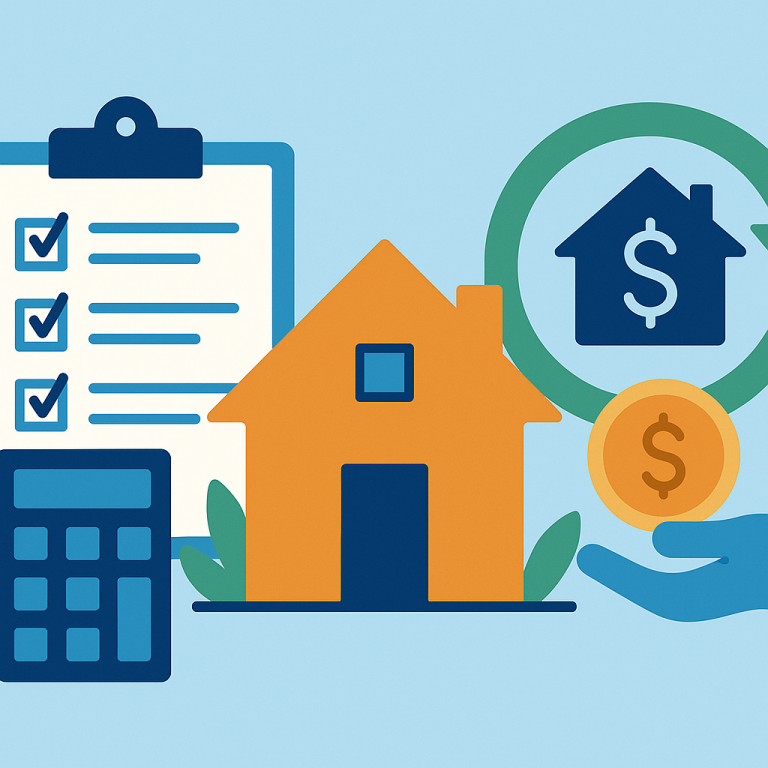Refinance guide refinancing to remove a co-signer
What refinancing to remove a co-signer is — and when it makes sense
Refinancing to remove a co-signer means replacing your existing mortgage with a new loan in your name alone so the co-signer is no longer legally responsible for the debt. Homeowners pursue this when a co-signer (often a parent, spouse, or friend) wants their liability removed, when relationships change, or when the primary borrower has improved credit and can qualify independently.
This strategy makes sense when the borrower’s income, credit score and debt-to-income (DTI) ratio are strong enough to qualify for a new loan on their own, and when removing the co-signer outweighs the costs of refinancing. It’s also an option when the co-signer’s credit or financial situation is harmed by being on the loan, or when estate and liability concerns make removal desirable.
Benefits and drawbacks
Benefits
-
Removes legal liability for the co-signer — they’re no longer on the hook if payments stop.
-
Improves the co-signer’s credit profile — reducing their reported debt can help their ability to borrow for other needs.
-
Simplifies ownership and estate planning — fewer parties on the mortgage reduces complexity if one person dies or wants to sell.
-
Gives the primary borrower full control over mortgage decisions and the property.
Drawbacks
-
Refinancing costs — closing costs, appraisal fees, title expenses and possibly mortgage insurance can add up.
-
Qualification risk — if the borrower doesn’t qualify alone, a refinance won’t be possible without continued co-signer support.
-
Potentially higher interest rate or longer amortization — refinancing to remove a co-signer could worsen loan terms depending on market rates and credit profile.
-
Loss of co-signer’s potentially better credit standing — if the original loan benefited from the co-signer’s higher credit, the new loan might carry a higher rate.
Costs and fees to expect
Refinance closing costs typically run about 2%–5% of the loan amount, though this varies by lender and loan size. Common fees include:
- Appraisal fee
- Lender origination fee and underwriting charges
- Title search and title insurance
- Recording and notary fees
- Credit report fees
- Prepaid items such as property taxes and homeowners insurance escrows
If your new loan results in a loan-to-value (LTV) ratio above conventional thresholds (typically >80%), you may need private mortgage insurance (PMI) or a similar product. Also check the current loan for any prepayment penalties or payoff fees, though these are uncommon on modern mortgages.
Step-by-step process
-
Evaluate your eligibility: review your credit score, monthly income, employment history, DTI and home equity. Run a mortgage affordability calculation based on qualifying income and current interest rates.
-
Review the existing loan: confirm the payoff amount, note any penalties, and check whether the loan is assumable (some FHA, VA or older loans may be assumable, allowing removal of a co-signer without a traditional refinance).
-
Shop lenders and loan products: get rate quotes and closing cost estimates from several lenders. Ask specifically about programs for removing a co-signer and whether any streamlined options exist (e.g., streamlined refinance for certain government loans).
-
Submit a refinance application: provide income documentation, tax returns, bank statements, and authorization to pull credit. Expect lender underwriting to verify you qualify on your own.
-
Appraisal and underwriting: the lender will typically order an appraisal and complete underwriting. Be responsive to documentation requests to avoid delays.
-
Closing: sign loan documents and pay closing costs (or confirm they are rolled into the loan). The lender will pay off the old mortgage and record the new loan in your name alone.
-
Confirm release: ensure the co-signer is removed from the mortgage lien and any recorded documents reflect the new loan. Keep copies of the payoff statement and new mortgage paperwork.
Common pitfalls to avoid
-
Assuming you’ll automatically qualify — lenders will underwrite you as a solo borrower; weak credit, low income or high DTI can disqualify you.
-
Ignoring equity and PMI implications — low equity can make refinance less attractive or require mortgage insurance that adds monthly costs.
-
Overlooking loan assumptions or co-signer-release options — some loans are assumable or have formal co-signer release processes that may be cheaper than refinancing.
-
Failing to shop lenders — rates and fees vary; even a small rate difference can justify switching lenders.
-
Not confirming the release is recorded — unless the lien is updated, the co-signer could remain tied to the title in public records.
Short FAQ
Can I remove a co-signer without refinancing?
Sometimes. Some mortgages are assumable or have formal co-signer-release provisions, and lenders may permit release after a period of on-time payments if the borrower qualifies on their own. These options are less common than refinancing and vary by loan type and servicer.
How long does a refinance to remove a co-signer take?
Typical refinance timelines are 30–45 days from application to closing, though timing depends on appraisal scheduling, lender workload and how quickly you provide documents.
Will refinancing to remove a co-signer hurt my credit?
You’ll have a hard credit inquiry during application and the new loan will appear on your credit report. If you make timely payments on the new mortgage, your credit can improve over time. The co-signer’s credit may benefit immediately because their reported debt is reduced.
Do I need 20% equity to refinance?
No. You can refinance with lower equity, but if your LTV is above common thresholds you may face higher rates or be required to carry PMI on conventional loans. Some government or specialized refinance programs have different equity rules.
Refinancing to remove a co-signer is a powerful tool to clear someone’s liability and simplify home ownership, but it requires careful evaluation of costs, qualification requirements and alternatives. Shop options, run the numbers, and confirm all releases are properly recorded before assuming the process is complete.
META: refinancing-remove-cosigner






